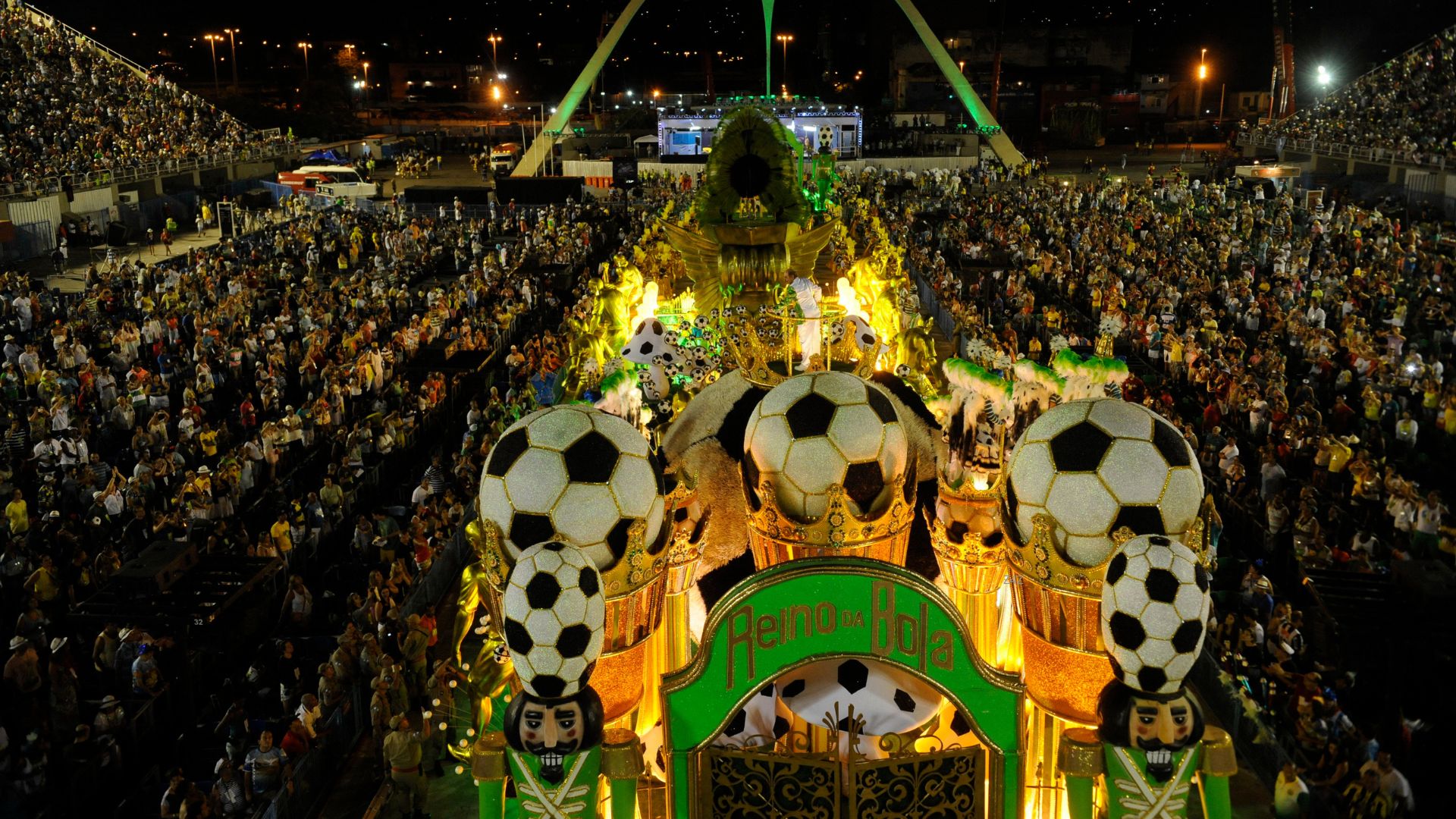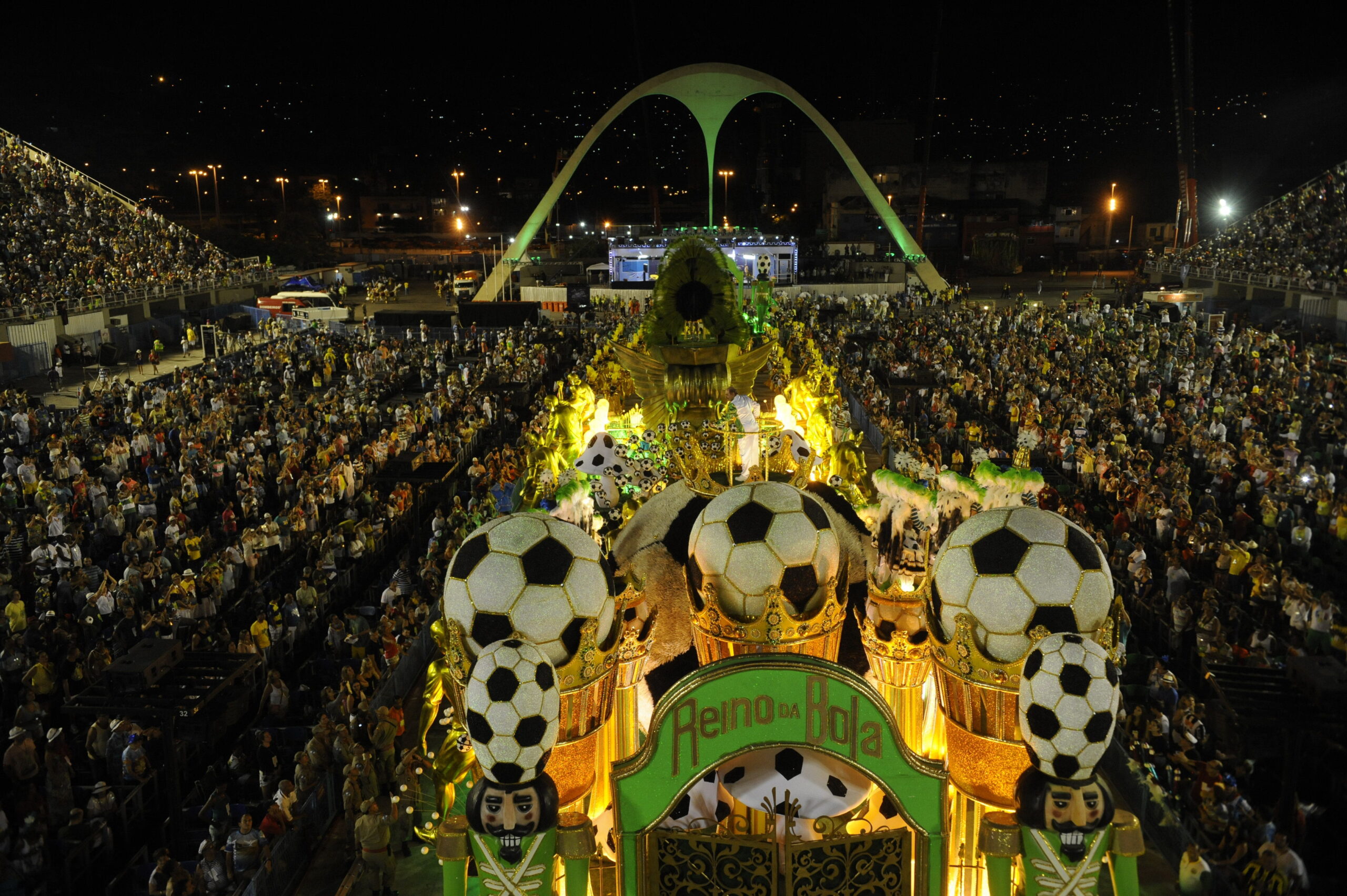- Your cart is empty
- Continue Shopping

Behind the scenes of Samba Schools: from creation to the Parade in Sapucaí
Rio de Janeiro Carnival is known for its grand and exciting parades, and behind each spectacular performance are the intense behind-the-scenes scenes of the samba schools. From the creation of the plots to the final preparations on Avenida Sapucaí, a series of processes and efforts are dedicated to ensuring that each school leaves its mark in the hearts of the public. Let's explore the intricate behind-the-scenes of this cultural production that enchants the world.

1 – Creation of the Plot
The process of creating a samba school parade begins with choosing the plot. Each year, schools decide on a theme that will be the basis of their presentation. This plot often reflects aspects of Brazilian culture, social issues or historical events. A team of carnival workers is in charge of developing and visualizing the plot, creating a script that will be told through allegories and costumes.
2 – Making Costumes and Allegories
With the plot established, the detailed work begins on creating costumes and allegories. Seamstresses, prop makers and visual artists work hard to bring the carnival-goers' vision to life. Every detail is carefully thought out, from the colorful feathers of the costumes to the imposing floats that will dazzle the audience. Months of manual labor are invested to ensure each piece is a masterpiece.
3 – Technical Tests
Technical rehearsals are a fundamental part of preparation. They take place in Marquês de Sapucaí and simulate the real conditions of the parade. During these rehearsals, schools fine-tune their choreography, test the mobility of the allegories and ensure that all details are synchronized. It is an opportunity for school members to familiarize themselves with the catwalk and adjust their performance accordingly.
4 – Battery
The drums of a samba school are the beating heart of the parade. Composed of skilled percussionists, the drums are responsible for creating the infectious rhythm that moves the school along the avenue. The drum master plays a crucial role, leading the performance and interacting with the components. Battery testing is intensive and frequent to ensure the required accuracy and power.
5 – School Components
The components, also known as passistas, are the members who parade representing the samba school. They undergo rigorous training to improve their samba steps and ensure an impeccable performance. The components also participate in dress rehearsals to get used to the dynamics of the parade and interaction with the public.
6 – Harmony and Evolution
Harmony and evolution are critical aspects for the success of a samba school. Harmony refers to the uniformity and interplay of the components, while evolution concerns the way in which the school occupies the avenue, maintaining a constant and engaging flow. The work of harmony directors and choreographers is essential to ensure that the school parades with grace and visual impact.
7 – Parade Day
The big day finally arrives, and the samba schools prepare to cross Sapucaí in front of thousands of spectators and television cameras. The tension behind the scenes is palpable, but the contagious energy of Carnival drives each component to do their best. The minutes leading up to the parade are full of anticipation and emotion.
8 – Judgment and Results
After the parade, the schools are judged in several categories, such as samba, allegories, costumes and drums. The results influence the final classification and the dispute for the title of Carnival champion. Expectation and anxiety remain until the results are revealed, when the joy of victory or the determination to return next year manifest themselves behind the scenes.
9 – Post-Carnival: Assessment and Planning for the Next Year
After Carnival ends, schools begin an evaluation process to identify strengths and areas for improvement. Work for next year begins practically immediately, with the choice of a new plot and the beginning of the preparation cycle. Carnival is a cyclical celebration, and behind the scenes are always active, building the next spectacular performance.
10 – The Magic Behind the Show
Behind the scenes at samba schools is a true journey of passion, dedication and hard work. Every detail, from the conception of the plot to the exhibition at Sapucaí, contributes to the richness and grandeur of Rio de Janeiro Carnival. The magic of this celebration lies not only in the avenue's spotlight, but also behind the scenes, where culture, art and festive spirit intertwine to create an unforgettable spectacle.

